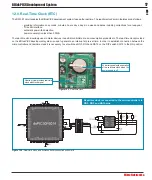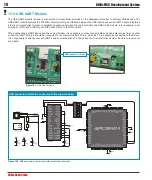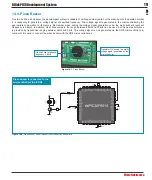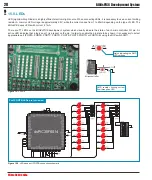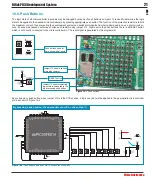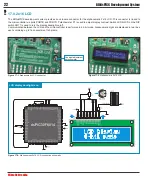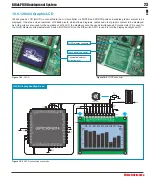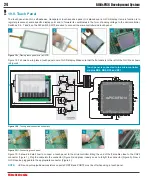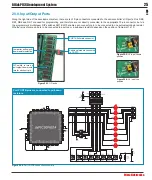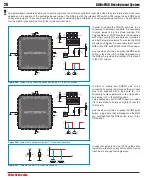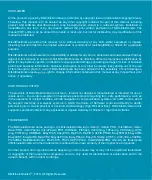
24
BIGdsPIC6 Development System
MikroElektronika
page
)LJXUHVKRZVLQGHWDLOKRZWRFRQQHFWDWRXFKSDQHOWRWKHPLFURFRQWUROOHU%ULQJWKHHQGRIWKHÀDWFDEOHFORVHWRWKH&1
FRQQHFWRU)LJXUH3OXJWKHFDEOHLQWRWKHFRQQHFWRU)LJXUHDQGSUHVVLWHDVLO\VRDVWRIXOO\¿WWKHFRQQHFWRU)LJXUH1RZD
GLCD can be plugged into the appropriate connector (Figure 4).
127(
LEDs and pull-up/pull-down resistors on ports PORTB and PORTF must be off when using a touch panel.
)LJXUHVKRZVKRZWRSODFHDWRXFKSDQHORYHUD*/&'GLVSOD\0DNHVXUHWKDWWKHÀDWFDEOHLVWRWKHOHIWRIWKH*/&'DVVKRZQ
in Figure 4.
7RXFK3DQHO
The touch panel is a thin, self-adhesive, transparent, touch-sensitive panel. It is placed over a GLCD display. Its main function is to
UHJLVWHUSUHVVXUHDWVRPHVSHFL¿FGLVSOD\SRLQWDQGWRIRUZDUGLWVFRRUGLQDWHVLQWKHIRUPRIDQDORJYROWDJHWRWKHPLFURFRQWUROOHU
Switches 5, 6, 7 and 8 on the DIP switch SW13 are used to connect the microcontroller and touch panel.
)LJXUH
: Touch panel connection schematic
: Connecting touch panel
4
3
1
1
3
4
)LJXUH
: Placing touch panel over a GLCD
7RXFKSDQHOLVFRQQHFWHGWRWKHPLFURFRQWUROOHU
YLDSLQV5%5%5)DQG5)








